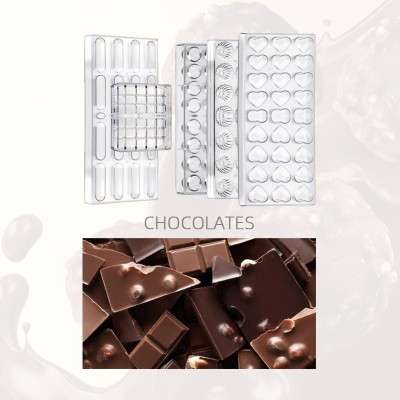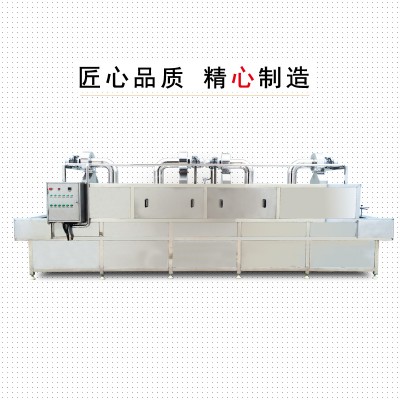Soilless cultivation seedling tray washer is a new type of cleaning machine designed and developed for some large-scale farms and agricultural research institutions, its main role is to clean and sterilize special molds and reduce the labor intensity of engaging.

The design principle is to use the high-pressure pump with a large head to clean the surface of the material, wash off the dirt, moss, and other dirt on the material strip, use the high-pressure wind knife to remove the cleaning water and then spray the disinfection solution, the whole process using the assembly line operation, as long as the material is put on the conveyor belt, the rest of the things are operated by the machine.


Soilless culture is a modern seedling technology that fixes plants with light materials such as grass charcoal or forest rotten soil and expanded vermiculite as seedling substrate, allows plant roots to contact nutrient solution directly, and uses mechanized precision sowing to form seedlings at one time. The selected seedling tray is compartmentalized, sowing one grain in one compartment and one plant in one room, and the roots of the seedlings are intertwined with the substrate, and the root pile is in the shape of a plug with a large top and a small bottom, which is generally called cavity tray.
Historically, the hallmark of agricultural civilization has been the degree of human intervention and control over the growth and development of crops. The environmental conditions of the above-ground part of the crop have proved to be relatively easy to achieve, but the control of the underground part (control of the root system) is very difficult under conventional soil culture conditions. The emergence of soil-less cultivation technology has given humans the ability to precisely control all environmental conditions of crop growth, including inorganic nutrient conditions, thus making it possible for agricultural production to be completely free from the constraints of natural conditions and to develop toward automated, mechanized and factory production in full accordance with human wishes. This will enable the production of crops to increase several times, tens of times, or even hundreds of times.
From the point of view of resources, arable land is an extremely valuable and non-renewable resource. Soilless cultivation can expand and supplement the non-renewable arable land resources by exploiting many non-arable lands, which is of far-reaching significance to alleviate and solve the increasingly serious arable land problems on the earth. Soilless cultivation can not only turn many deserts on the earth into oases but in the near future, the ocean and space will also become new areas for exploitation. The United States has listed soilless cultivation as one of the top ten high technology exchanges to be developed in the country this century, which is a research report on plant cultivation in space that can only be soilless cultivation. Soilless cultivation technology in Japan has been used by many scientists as a powerful means to study “cosmic farms,” and it is no longer an unbelievable problem that people call agriculture in the space age.
The problem of water resources is also a major problem that is increasingly threatening the survival and development of human beings worldwide. Not only in arid regions but also in developed and densely populated big cities, the problem of water scarcity is becoming more and more prominent. As the population grows, various water resources are being overexploited, and some areas are nearly depleted. Therefore, controlling agricultural water use is one of the measures to save water, and soilless cultivation, which avoids a large amount of water leakage and loss, makes it possible to compensate for water resources that are difficult to be regenerated. It will definitely become the way to water-saving agriculture and agriculture in dry areas.
Admittedly, there are many problems in the process of soilless cultivation technology towards radicalization. The prominent problems are high cost and one-time investment; it also requires a high management level, and the managers must have certain scientific knowledge, which is impossible anywhere.
Theoretically, further research on the physiological indicators of mineral nutrient status to reduce management blindness is also a problem to be solved. In addition, pest and disease control in soilless culture, disinfection of substrate and nutrient solution, disposal of the waste substrate, etc., also need further research. However, with the development and improvement of science and technology, and more importantly, the inherent superiority of this new technology, it has shown people an unlimited and broad development prospect.

◆The equipment is made of all-grade 304 stainless steel, which is durable, hygienic, and safe.
◆The pump adopts a domestic first-line stainless steel high-pressure pump to ensure the cleaning effect.
◆Automatically unified water supply, unified drainage throughout the line, keeping the workshop clean and hygienic.
◆Frequency control so that stainless steel baskets can be cleaned in multiple ways.
◆Emergency stop system, automatic control system, high safety factor.
◆Humanized design, from feed height to water intake and drainage, to the safety system, and speed control, all following humanized design, to ensure that the operator is safe, fast, convenient, clean, and hygienic during operation.
◆The filtration system is more reasonable, with multi-layer filtration and large spray pressure.
◆The water tank is designed reasonably for easy drainage and filtration.
◆Electric control Delixi brand, first-line brand, excellent quality
◆The chain operation mode is reasonable.
Wait, please call us for more details.
We tailor the most suitable equipment for each customer, including cleaning, air drying, and drying sections. The layout of each section is strictly by the items to be cleaned, and the flow rate, lift, and drying efficiency are reasonably designed to ensure normal production conditions. The biggest energy saving.






